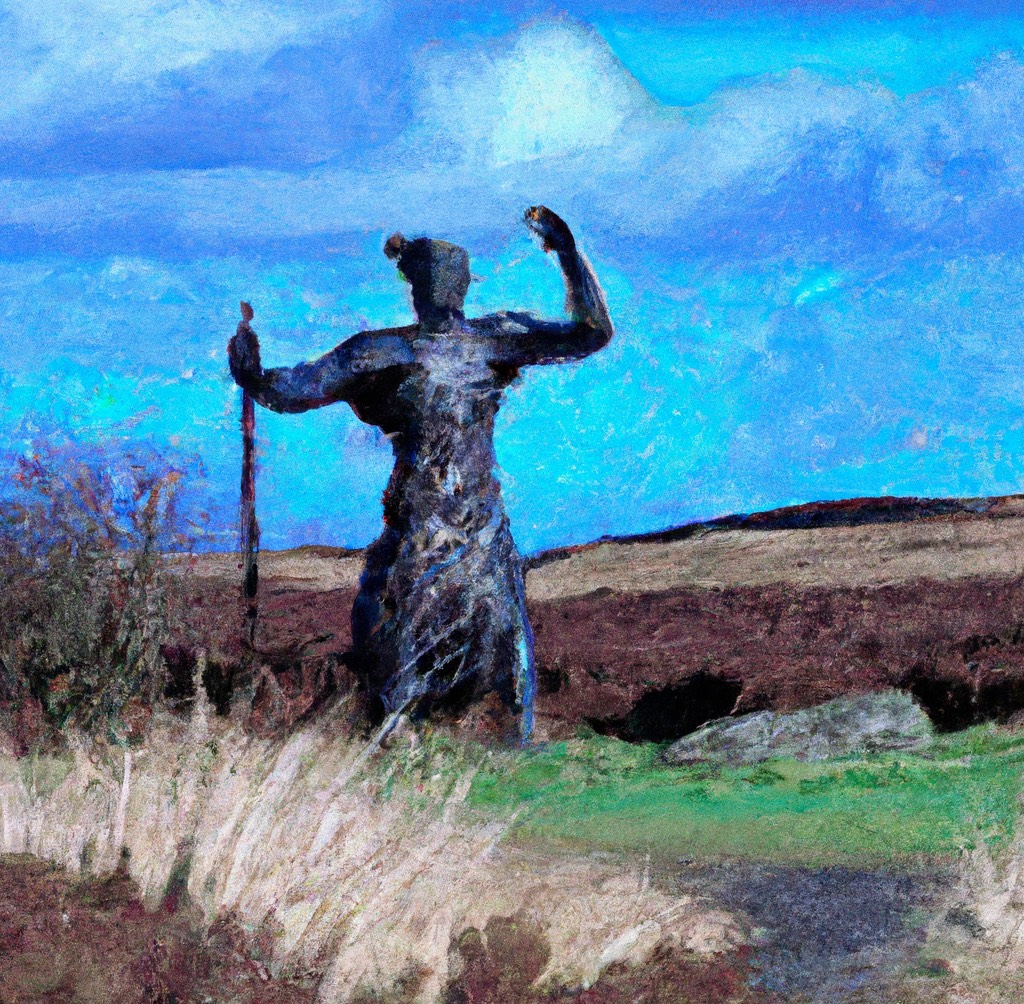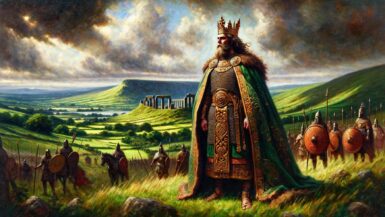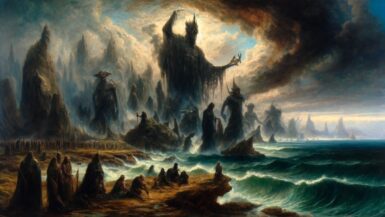The Ulster Cycle, one of the four major cycles of Irish mythology, is a captivating collection of tales and legends centered around the heroic exploits of the ancient kingdom of Ulster. This cycle features some of the most iconic characters in Irish mythology, such as Cú Chulainn, Conchobar Mac Nessa, and the fearsome warriors of the Red Branch. The stories of the Ulster Cycle are set during the Heroic Age, a time of great deeds, epic battles, and larger-than-life personalities. This article will provide a comprehensive exploration of the history of the Ulster Cycle, delving into the lives and adventures of its most famous characters.
The Ulster Cycle: An Overview
Four Cycles of Irish Mythology
Irish mythology is traditionally divided into four major cycles: the Mythological Cycle, the Ulster Cycle, the Fenian Cycle, and the Historical Cycle. Each of these cycles is a collection of tales, myths, and legends that explore different aspects of ancient Irish history, culture, and society.
The Ulster Cycle’s Role
The Ulster Cycle is primarily focused on the heroic exploits and adventures of the warriors of the Red Branch, an elite group of fighters from the ancient kingdom of Ulster. The stories in this cycle are characterized by their emphasis on feats of bravery, martial prowess, and personal honor, reflecting the values and ideals of the Heroic Age.
The Red Branch: Ulster’s Elite Warriors
Origins and Significance
The Red Branch, also known as the “Craobh Ruadh” or “Cróeb Ruad,” was a legendary group of elite warriors from the ancient kingdom of Ulster. They served under the rule of Conchobar Mac Nessa, the king of Ulster, and were renowned for their extraordinary skills in battle and unwavering loyalty to their king.
Emain Macha: The Royal Capital
Emain Macha, also known as “Navan Fort,” was the royal capital of the ancient kingdom of Ulster and the primary stronghold of the Red Branch warriors. This fortified settlement was located in what is now County Armagh, in modern-day Northern Ireland. Emain Macha served as the backdrop for many of the stories in the Ulster Cycle, as well as the site of numerous legendary battles and heroic exploits.
Conchobar Mac Nessa: The King of Ulster
Birth and Early Life
Conchobar Mac Nessa, the legendary king of Ulster and leader of the Red Branch warriors, was the son of Cathbad, a renowned druid, and Nessa, a noblewoman of Ulster. His rise to power was marked by a series of intrigues and political machinations, which ultimately led to his ascension as the ruler of the ancient kingdom.
Rule and Legacy
As king of Ulster, Conchobar Mac Nessa was known for his wisdom, courage, and just rule. His reign was marked by numerous military campaigns and alliances, as well as the growth and expansion of the Red Branch. Conchobar’s influence extended far beyond his kingdom, as he was respected and feared by both his allies and enemies alike.
Cú Chulainn: The Hound of Ulster
Birth and Early Life
Cú Chulainn, also known as “Setanta,” was the most famous hero of the Ulster Cycle and the greatest warrior of the Red Branch. Born to Deichtine, the sister of Conchobar Mac Nessa, and the god Lugh, Cú Chulainn possessed extraordinary strength, agility, and martial prowess from a young age. His childhood adventures and prodigious feats of strength earned him a reputation as a formidable warrior, even before he joined the ranks of the Red Branch.
The Slaying of the Hound and the Name “Cú Chulainn”
Cú Chulainn received his iconic name following an incident in which he killed the ferocious hound of Culann, a wealthy smith. As a young boy, Setanta inadvertently killed the hound while playing hurling, and to atone for this deed, he offered to serve as Culann’s guard dog until a suitable replacement could be found. This earned him the name “Cú Chulainn,” which means “the Hound of Culann.”
Training with Scáthach and Emer’s Hand in Marriage
As a young man, Cú Chulainn traveled to the Isle of Skye to train under the renowned warrior woman Scáthach, who taught him the arts of war and granted him the use of the powerful Gáe Bolg, a barbed spear that could pierce any armor. Upon returning to Ulster, Cú Chulainn sought the hand of the beautiful Emer, daughter of the chieftain Forgall Monach. After completing several impossible tasks set by Forgall, Cú Chulainn won Emer’s hand in marriage, further solidifying his status as a legendary hero.
The Táin Bó Cúailnge: The Cattle Raid of Cooley
Overview of the Táin
The Táin Bó Cúailnge, or “The Cattle Raid of Cooley,” is the central epic of the Ulster Cycle and one of the most famous tales in Irish mythology. This saga recounts the war between the forces of Queen Medb of Connacht and the warriors of Ulster, led by Cú Chulainn, over the possession of the great bull Donn Cúailnge.
The Curse of Macha and the Role of Cú Chulainn
During the Táin, the men of Ulster were afflicted by the Curse of Macha, a debilitating weakness brought about by the suffering of a pregnant woman forced to race against the king’s chariot. As a result, Cú Chulainn, who was unaffected by the curse due to his divine heritage, was left to defend Ulster single-handedly. He held back the forces of Connacht through a series of single combats and daring exploits, earning him the title “The Hound of Ulster.”
The Final Battle and the Death of Ferdiad
The climax of the Táin Bó Cúailnge was the final battle between Cú Chulainn and his former friend and fellow warrior Ferdiad, who had been manipulated by Queen Medb to fight on her side. The two warriors engaged in a fierce and evenly matched combat, which ultimately ended with Cú Chulainn killing Ferdiad using the Gáe Bolg. This victory marked the end of the Táin and secured Cú Chulainn’s place as the greatest hero of the Ulster Cycle.
The Tragic Death of Cú Chulainn
The Prophecy of Cú Chulainn’s Death
Throughout his life, Cú Chulainn was haunted by prophecies of his early death. He was aware that his extraordinary powers and heroic exploits would ultimately lead to a tragic and violent end, yet
he chose to embrace his fate and continue his path as a legendary hero.
The Final Battle and Betrayal
Cú Chulainn’s death was the result of a complex web of treachery and betrayal, involving his enemies, his closest allies, and even the gods themselves. The warrior queen Medb of Connacht, still seeking revenge for her defeat in the Táin Bó Cúailnge, conspired with other enemies of Cú Chulainn to bring about his downfall.
The Three Great Sorrows and the Geis
Cú Chulainn’s enemies exploited a series of “geasa” or taboos that bound him, forcing him to choose between breaking these sacred oaths or facing certain death. These geasa were known as the “Three Great Sorrows” and included eating the flesh of his namesake, the hound; accepting arms from a woman; and refusing hospitality. Cú Chulainn ultimately broke all three of these geasa, which weakened him and left him vulnerable to his enemies.
The Death of Cú Chulainn
In his weakened state, Cú Chulainn was mortally wounded in battle by the forces of his enemies. Refusing to die on the ground like an ordinary man, he tied himself to a standing stone so that he could face his enemies while standing. It was only when a raven, the symbol of the goddess of war and death, the Morrigan, landed on his shoulder that his enemies knew he was truly dead. Cú Chulainn’s tragic death marked the end of the Heroic Age and the decline of the ancient kingdom of Ulster.
The Legacy of the Ulster Cycle in Irish Culture and Folklore
Enduring Influence of the Characters
The characters of the Ulster Cycle, such as Cú Chulainn, Conchobar Mac Nessa, and the warriors of the Red Branch, have had a lasting impact on Irish culture and folklore. Their stories of heroism, loyalty, and martial prowess continue to be celebrated and revered in various forms, from oral storytelling to modern adaptations.
Literary and Artistic Inspirations
The tales of the Ulster Cycle have inspired countless works of literature, art, music, and theater throughout history. The stories have been the subject of numerous retellings, adaptations, and reinterpretations, both in Ireland and around the world, reflecting the enduring appeal and fascination with the heroic exploits of Cú Chulainn and his companions.
The Ulster Cycle as a Reflection of Ancient Irish Society
The stories of the Ulster Cycle provide a valuable insight into the values, beliefs, and social structures of ancient Irish society. The tales emphasize the importance of personal honor, martial prowess, and loyalty to one’s king and comrades, reflecting the ideals of the Heroic Age. By exploring the stories of the Ulster Cycle, we can gain a deeper understanding of the cultural influences that have shaped the unique identity of Ireland and its people.






Leave a reply